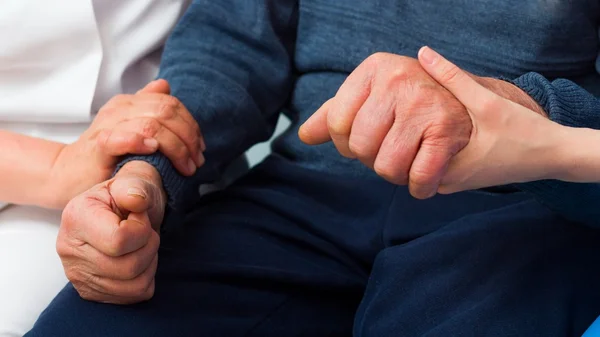Managing Parkinson’s Disease

Parkinson’s disease (PD) is a neurological disorder that occurs when certain neurons in the brain wither or become impaired. These nerve cells are located in the brain region called the substantia nigra pars compacta, which produces dopamine neurons that are necessary for motor control and muscle function, and also behavioural, emotional and cognitive functions.
How Parkinson’s develops in itself is unclear, though its mostly linked to a combination of ageing and genetic factors. Symptoms of Parkinson’s disease begin to appear when approximately 60 to 80% of these neurons become damaged, and they typically develop for people around the age of 60, though about some may develop early-onset forms of the disease when they are 50 or so.
Symptoms Of Parkinson’s
Early symptoms of Parkinson’s disease are subtle, and gradually manifests over time. An early example would be having restless limbs, limbs that refuse to function normally, a tendency to lean forward while taking hurried steps and being unable to initiate or continue regular movement. As the disease progresses, people may have difficulty walking and talking and they also begin to develop other symptoms like:
- Tremors
- Imbalance issues
- Cognitive impairment
- Mood disorders
- Slowed movement (bradykinesia)
- Diminished speech and writing skills
Other more debilitating symptoms may include urinary problems or constipation; skin problems, sleep disruptions or even in uncommon cases dementia.
Diagnosis Of Parkinsons
Symptoms of Parkinson’s and the rate of its progression differ greatly among individuals. While many are seemingly deemed as effects of normal aging, in reality, there are no definitive methods to actually detect it, and thus it can be difficult to ascertain actual symptoms because there is so much variability among its patients. As a result, doctors are not able to accurately predict how quickly these symptoms will worsen, or even which specific symptoms will develop in the patient itself.
There are currently no blood or laboratory tests to diagnose nongenetic cases of Parkinson’s disease. Most diagnosis that are done are based on the person’s medical history and a neurological examination.
How to Manage Parkinson’s Disease
To this day, there is no cure for Parkinson’s disease. However, there are several medicines, surgical treatment, and other therapies that can relieve some symptoms.
1. Medicines
The main therapy for Parkinson’s is levodopa, also called L-dopa. Nerve cells use levodopa to make dopamine to replenish the brain’s own dwindling supply. Levodopa is usually used along with another medication called carbidopa which prevents or reduces some of the side effects of levodopa therapy such as nausea, vomiting, low blood pressure, and restlessness and reduces the amount of levodopa needed to improve symptoms.
There are also additional medicines such as dopamine agonists to mimic dopamine function. Selegilene helps to inhibit the breakdown of dopamine and is often used in conjunction with levodopa/carbidopa therapy. Amantadine is an antiviral drug that has been found to alleviate some of the symptoms of PD an restoring the balance of certain neurotransmitters in the brain.Surgical Treatment
2. Surgery
One of the most widely used modern developments to treat Parkinson’s comes in the form of deep brain stimulation (DBS). It is a procedure in which a device is implanted in the person to deliver electrical pulses to the brain and can help relieve motor symptoms of stiffness or rigidity, slowness, and tremors. This surgery may be considered for people who have had Parkinson’s for a long time, or for those who no longer feels that their medications are working effectively. However, it should be noted that it is not a cure for Parkinson’s, as it does not solve non-motor symptoms of the disease itself
3. Other Therapies
Physical, occupational, and speech therapies can help with gait (limb movement) and voice disorders, tremors and rigidity, and decline in mental functions. Additionally, a healthy diet and activities and exercises that can help reduce stress include meditation, yoga, deep breathing, to strengthen muscles and improve balance can also greatly benefit as well.
4. Adjusting Living Space With Parkinsons
Depending on the Parkinson’s symptoms that someone is experiencing, there are a variety of ways to improve everyday life with a few adjustments to living space. For those with mobility issues, wide walkways help manage this. Beds with adjustable features can be helpful for anyone with difficulty getting in and out of them, and grab bars around places in the house may be helpful for those with balance issues.
Conclusion
While Parkinson’s disease can seriously affect seniors, one should discuss management and health strategies with a professional to help better manage this disease to not let it affect their quality of life.
Links
https://www.neuroscientificallychallenged.com/blog/know-your-brain-substantia-nigra
https://www.nia.nih.gov/health/parkinsons-disease

Leave a Reply
Want to join the discussion?Feel free to contribute!